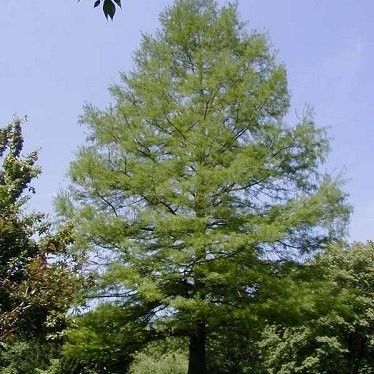
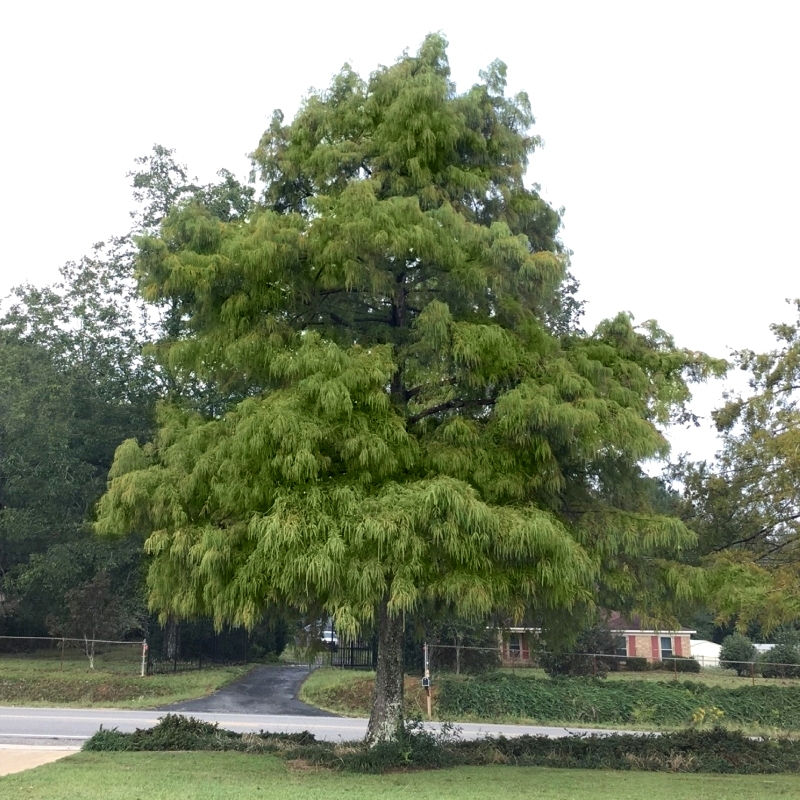
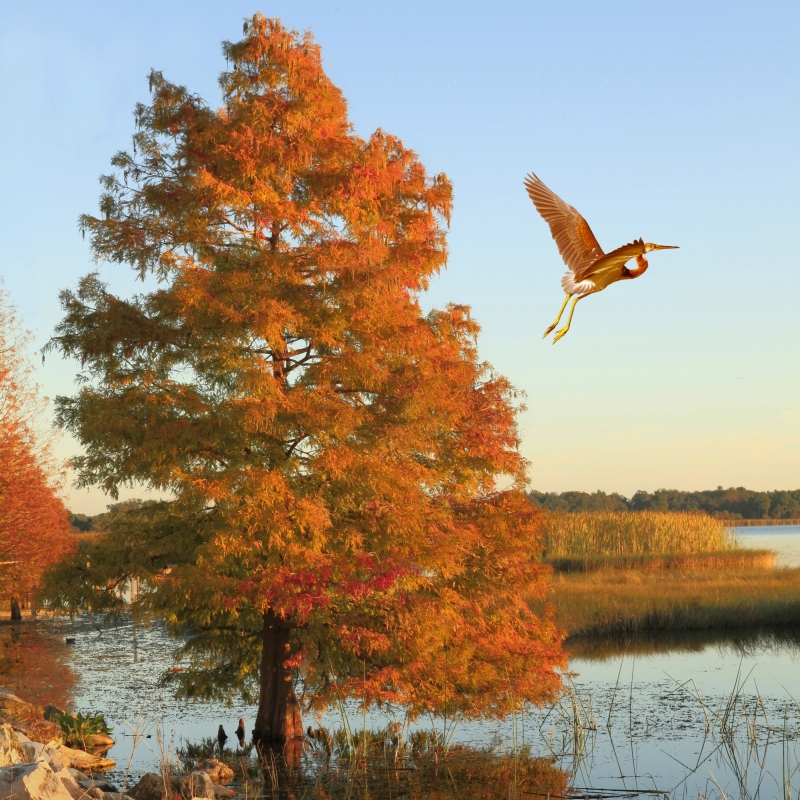
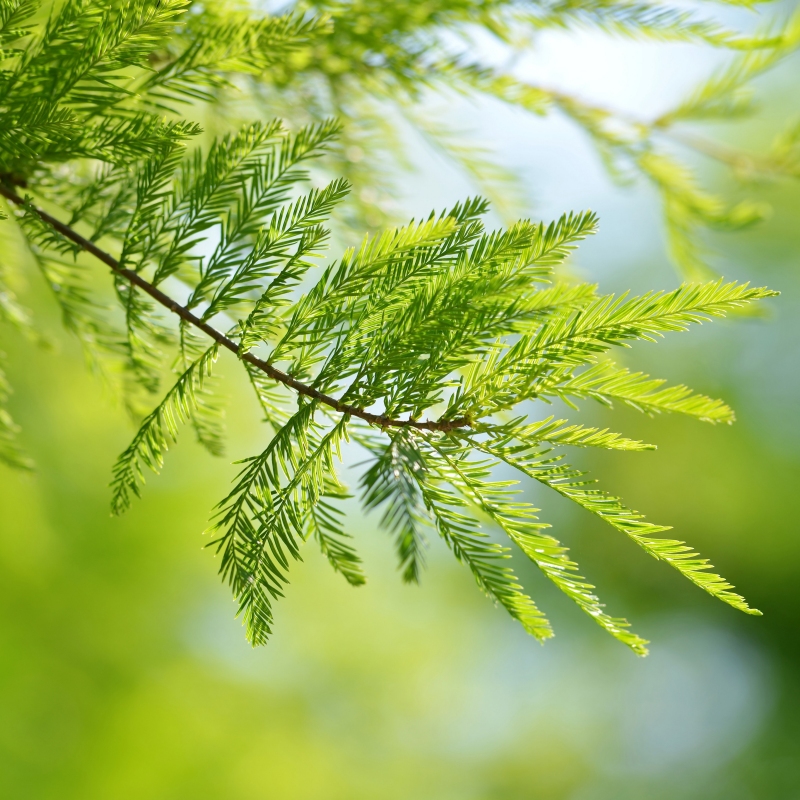
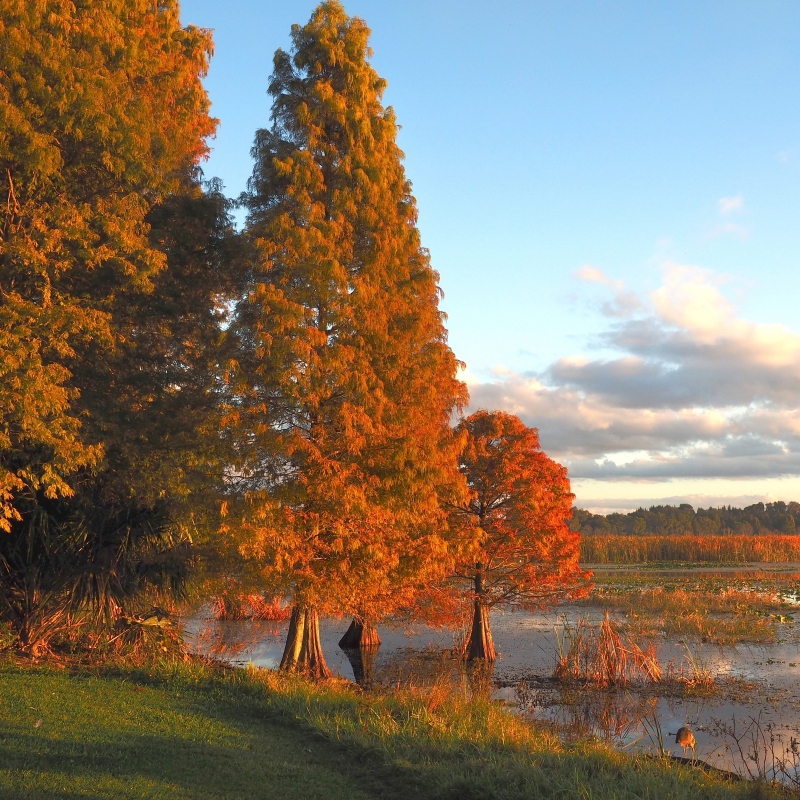

Bald Cypress Tree
Taxodium distichum
84 reviews
Bald Cypress Tree
Taxodium distichum
84 reviews
- 2.5 Gallon 4-5 Feet
- 3.5 Gallon
- 3.5 Gallon 4-5 Feet
- Trade 3 Gallon
- 2.5 Gallon 5-6 Feet
We are sorry, product is currently out of stock due to seasonal availability. Please check the "Related plants available in your area" section below
Not just beautiful - intentionally selected by ShrubHub's 3D landscape design team to fit real-world spaces and maximize yard potential.
Why Bald Cypress Tree?
The Bald Cypress tree is a unique species of tree that thrives in swampy areas or near water. It is famous for its ornamental value and adaptability to many environmental conditions. The Bald Cypress is well known for its remarkable ability to remove excess carbon from the atmosphere. These trees have significant cultural and ecological importance and are a valuable part of many aquatic ecosystems.
Sunlight
Bald Cypress trees require full sunlight to thrive. They are sun-loving trees and prefer to be exposed to direct sunlight for at least 6-8 hours a day.
Watering
Bald Cypress trees require consistently moist soil, particularly in the first few years of growth. They thrive in wetland habitats and can tolerate standing water for extended periods. Regular watering is needed to ensure their health and survival.
Fertilizing
Bald Cypress trees do not have specific fertilizer requirements. However, they benefit from fertilizers that are high in phosphorus and potassium and have a balanced nitrogen content. It is best to choose a slow-release fertilizer and apply it in early spr
Native to the swampy areas of southern North America, the bald cypress tree (also known as swamp cypress, tidewater red cypress, gulf cypress, and white cypress) is an extremely unique slow-growing deciduous conifer that boasts majestic greatness.
This cone-bearing tree looks like it is reaching for the sky as it grows up to 50 to 70 feet tall and 20 to 30 feet wide.
It is adorned with feathery, horizontal branches (often draped with Spanish moss), needle-like leaves, and reddish-brown bark that later turns into ashy gray, bald cypress trees never fail to add glory to any outdoor space. Bonus, this plant puts on a fantastic show in the fall, displaying outstanding foliage and painting landscapes with vivid reds, fiery oranges, and shimmering golds.
This low-maintenance, hardy tree thrives in areas that receive full sun to partial shade, grows best in swampy soils (yet adapts to dry ones), reaches up to 600 years of age, and preserves natural habitats for wildlife as its triangular seeds are attractive to wood ducks, wild turkey, water birds, and squirrels.
If there’s a strikingly beautiful tree that doubles as an architectural focal point, the bald cypress is the one. With its pyramidal shape, mighty figure, and exciting characteristics, this plant is a clever way to steal visitors' attention once they enter your yard.
If you are wondering why you should plant this staple of southern swamps in your yard or driveway, think of its deep, leafy shade that provides your property with complete privacy and keeps your garden cool during scorching hot summer days. Plus, bald cypress prevents erosion, improves air quality, and is used to make boats, fences, and cabinets.
Add visual interest, depth, and texture to your yard with one click! Order yours now!
Plant Information:
| Botanical Name: | Taxodium distichum |
| USDA Zones: | 4 - 10 |
| Water: | Moderate to Wet |
| Exposure: | Full Sun |
| Soil Needs: | Widely Adaptable |
| Mature Height: | 50 - 65 feet |
| Mature Spread: | 20 - 30 feet |








Pollination Info
Pollination Info for Bald Cypress Tree
Bald cypress trees are monoecious, which means they have separate male and female reproductive parts on the same tree.
The male flowers of bald cypress are small, brown, and grow in clusters on the tips of new growth. These flowers produce yellow pollen in the spring that is wind-blown to the cones of female flowers. The female flowers of the bald cypress are small and green and are located on the same tree as the male flowers, but on separate branches. These flowers develop into cones that house the tree's seeds.
Bald cypress trees primarily rely on wind for pollination, although insects such as bees and flies may visit the flowers to collect nectar or pollen.
As bald cypress trees are found in wetland areas, they do not typically experience a lot of competition for pollinators, and their seeds are dispersed by water instead of being eaten and dispersed by animals.
FAQ
Bald Cypress Tree FAQ
What is a Bald Cypress Tree?
A Bald Cypress Tree is a type of coniferous tree that is native to the southeastern United States.
How tall do Bald Cypress Trees grow?
Bald Cypress Trees can grow up to 120 feet tall.
What is the lifespan of a Bald Cypress Tree?
Bald Cypress Trees can live up to 600 years.
What is the shape of a Bald Cypress Tree?
Bald Cypress Trees have a pyramidal shape when young, but become more irregular as they age.
What is the bark of a Bald Cypress Tree like?
The bark of a Bald Cypress Tree is gray-brown and fibrous, with deep furrows and ridges.
When do Bald Cypress Trees produce their seed cones?
Bald Cypress Trees produce their seed cones in the fall.
Do Bald Cypress Trees shed their leaves in the fall?
Yes, Bald Cypress Trees are deciduous and shed their needle-like leaves in the fall.
What is the wood of a Bald Cypress Tree used for?
The wood of a Bald Cypress Tree is used for building boats, furniture, and decking, among other things.
Can Bald Cypress Trees grow in wet conditions?
Yes, Bald Cypress Trees are well adapted to growing in wet conditions and are often found in swamps and wetlands.
Planting & Care
Planting & Care for Bald Cypress Tree
Planting
1. Choose a location with well-drained soil and full sun to partial shade.
2. Dig a hole that is twice the width and just as deep as the root ball.
3. Mix organic matter such as compost or peat moss into the soil to improve drainage and soil quality.
4. Place the tree in the hole and backfill with soil, pressing down firmly to remove any air pockets.
5. Water thoroughly and add a layer of mulch around the base of the tree to retain moisture and suppress weed growth.
Care
1. Water deeply and regularly, especially during periods of drought.
2. Fertilize with a balanced fertilizer in early spring, following the manufacturer's instructions.
3. Prune in late winter or early spring to remove any dead or damaged branches.
4. Provide support for the tree if necessary, especially in areas with high winds.
5. Watch for pests and diseases, such as scale insects and cankers, and take appropriate action if necessary.
Check Out These Verified Customer Reviews:
Customer Reviews
4.7 out of 5 based on 84 reviews
Thank you! Your review has been submitted.
Beautiful tree! Looks great in my yard.
The bald cypress tree arrived in perfect condition. Great quality and size. Highly recommend!
I purchased a beautiful Bald Cypress Tree from this website and I couldn't be happier with it! The tree arrived in excellent condition and was even more stunning in person. The quality is top-notch and the customer service was fantastic. I highly recommend this product and website to anyone looking for a gorgeous addition to their yard.
Item has been added to your cart.


